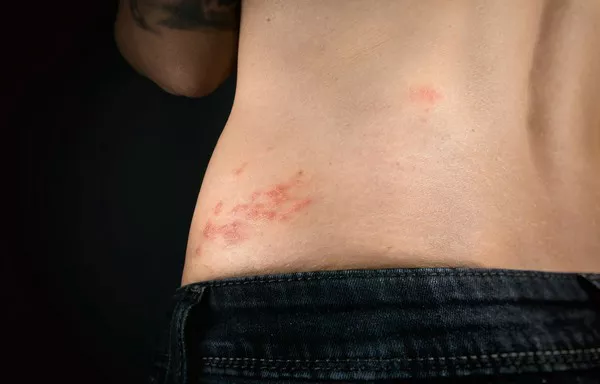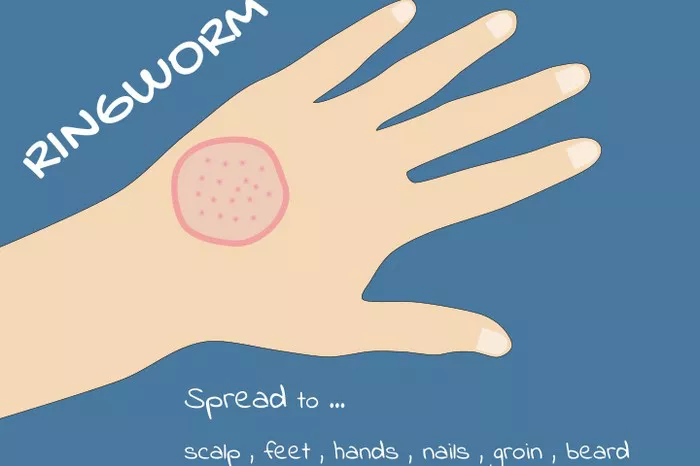Shingles, also known as herpes zoster, is a painful skin rash caused by the reactivation of the varicella-zoster virus (VZV), the same virus responsible for chickenpox. After an individual recovers from chickenpox, VZV remains dormant in the body’s nerve tissue. Later in life, the virus can reactivate, causing shingles. Various factors, including stress, a weakened immune system, and certain medical conditions, are known to trigger this reactivation. However, the relationship between physical trauma, such as a back injury, and the onset of shingles is less clear. This article delves into whether a back injury can indeed trigger shingles, examining the mechanisms of VZV reactivation, the impact of physical trauma, and existing medical evidence.
Understanding Shingles and Its Causes
Shingles manifests as a painful, blistering rash typically localized to one side of the body. This condition occurs when VZV reactivates from its dormant state in the dorsal root ganglia, the clusters of nerve cell bodies in the spine. Reactivation leads to inflammation and damage to the affected nerves, causing the characteristic symptoms of shingles, including pain, itching, and rash.
The precise causes of VZV reactivation are not entirely understood, but several risk factors have been identified:
- Age: The risk of shingles increases with age, particularly in individuals over 50.
- Immune System Compromise: Conditions or treatments that weaken the immune system, such as HIV/AIDS, cancer treatments, and immunosuppressive medications, can trigger shingles.
- Stress: Psychological stress and trauma have been linked to shingles outbreaks.
- Physical Trauma: Some studies suggest that physical trauma, including surgery or injury, may precipitate shingles.
Mechanisms of Viral Reactivation
The reactivation of VZV is a complex process influenced by the interaction between the virus and the host’s immune system. In its dormant state, VZV resides in the nerve cells without causing symptoms. However, when the immune system’s surveillance diminishes, the virus can reactivate and travel along the nerve fibers to the skin, resulting in shingles.
The following mechanisms are believed to contribute to VZV reactivation:
- Immune System Decline: Aging and certain medical conditions can weaken the immune system, reducing its ability to keep the virus in check.
- Stress Response: Chronic stress can alter immune function, potentially facilitating viral reactivation.
- Physical Trauma: Injury or surgery near nerve tissues may cause localized inflammation, potentially reactivating the virus.
The Link Between Back Injury and Shingles
The hypothesis that a back injury could trigger shingles centers around the idea that physical trauma might induce local inflammation and stress in nerve tissues, creating an environment conducive to viral reactivation. Several case studies and clinical reports support this notion, although comprehensive research is limited.
Case Studies and Clinical Reports
Numerous case studies have documented instances where patients developed shingles following physical trauma, including back injuries. These reports often describe shingles outbreaks occurring in the same area as the injury. For example, a patient who suffered a lumbar spine injury might later develop shingles in the lower back region. These observations suggest a potential link between the injury and viral reactivation.
Potential Mechanisms
- Local Inflammation: A back injury can cause inflammation in the affected area, potentially disrupting the dormant state of VZV in nearby nerve tissues. Inflammation can compromise the local immune response, allowing the virus to reactivate.
- Nerve Damage: Injuries that involve nerve damage may directly impact the nerve cells where VZV resides. This damage could trigger the virus to exit dormancy and travel along the nerve fibers to the skin.
- Immune Response: The body’s response to injury includes mobilizing immune cells to the affected area. This localized immune activity might inadvertently alter the balance between VZV and the immune system, facilitating reactivation.
Scientific Evidence and Research
While case studies provide anecdotal evidence, larger-scale studies are needed to establish a definitive link between back injuries and shingles. Some research has explored the broader relationship between physical trauma and shingles, offering insights into potential mechanisms.
SEE ALSO: Does Shingrix Help with Herpes Outbreaks?
Epidemiological Studies
Epidemiological studies have investigated the association between trauma and shingles. A study published in the Journal of Infectious Diseases examined the incidence of shingles in individuals who experienced trauma or surgery. The researchers found that trauma was associated with an increased risk of developing shingles, supporting the hypothesis that physical injury can trigger viral reactivation.
Animal Studies
Animal models have been used to study VZV reactivation and the impact of physical trauma. These studies have demonstrated that trauma can induce VZV reactivation in animal subjects, providing further evidence that injury might play a role in triggering shingles. However, translating these findings to humans requires caution due to differences in immune system responses and viral behavior.
Clinical Implications and Management
Understanding the potential link between back injuries and shingles has important clinical implications. Healthcare providers should be aware of the possibility of shingles in patients with recent back injuries, particularly those with other risk factors such as advanced age or immunosuppression.
Diagnosis
Diagnosing shingles involves recognizing its characteristic symptoms, including the painful, blistering rash that follows a dermatomal pattern (the area of skin supplied by a specific spinal nerve). In patients with a recent back injury, clinicians should consider shingles as a differential diagnosis if symptoms align with this pattern.
Treatment
Treatment for shingles includes antiviral medications, pain management, and supportive care. Early intervention with antiviral drugs, such as acyclovir, valacyclovir, or famciclovir, can reduce the severity and duration of symptoms. Pain management may involve analgesics, anti-inflammatory medications, and, in severe cases, nerve blocks.
Prevention
Preventative measures are crucial, especially for individuals at higher risk of shingles. The shingles vaccine (Shingrix) is recommended for adults over 50 and for younger individuals with weakened immune systems. Vaccination significantly reduces the risk of developing shingles and its complications.
Conclusion
The relationship between back injuries and shingles is supported by clinical observations and limited research. Physical trauma, including back injuries, can potentially trigger shingles by inducing local inflammation, nerve damage, and immune system responses that favor VZV reactivation. While more extensive research is needed to establish a definitive link, healthcare providers should consider the possibility of shingles in patients with recent back injuries, particularly those with additional risk factors. Early diagnosis and treatment are essential to managing shingles and reducing its impact on patients’ health and quality of life.
In summary, while a back injury may not be a common trigger for shingles, it is a plausible factor that warrants attention in the clinical setting. Understanding the interplay between physical trauma and viral reactivation can enhance patient care and inform preventative strategies for at-risk populations.
Related Topics:
























